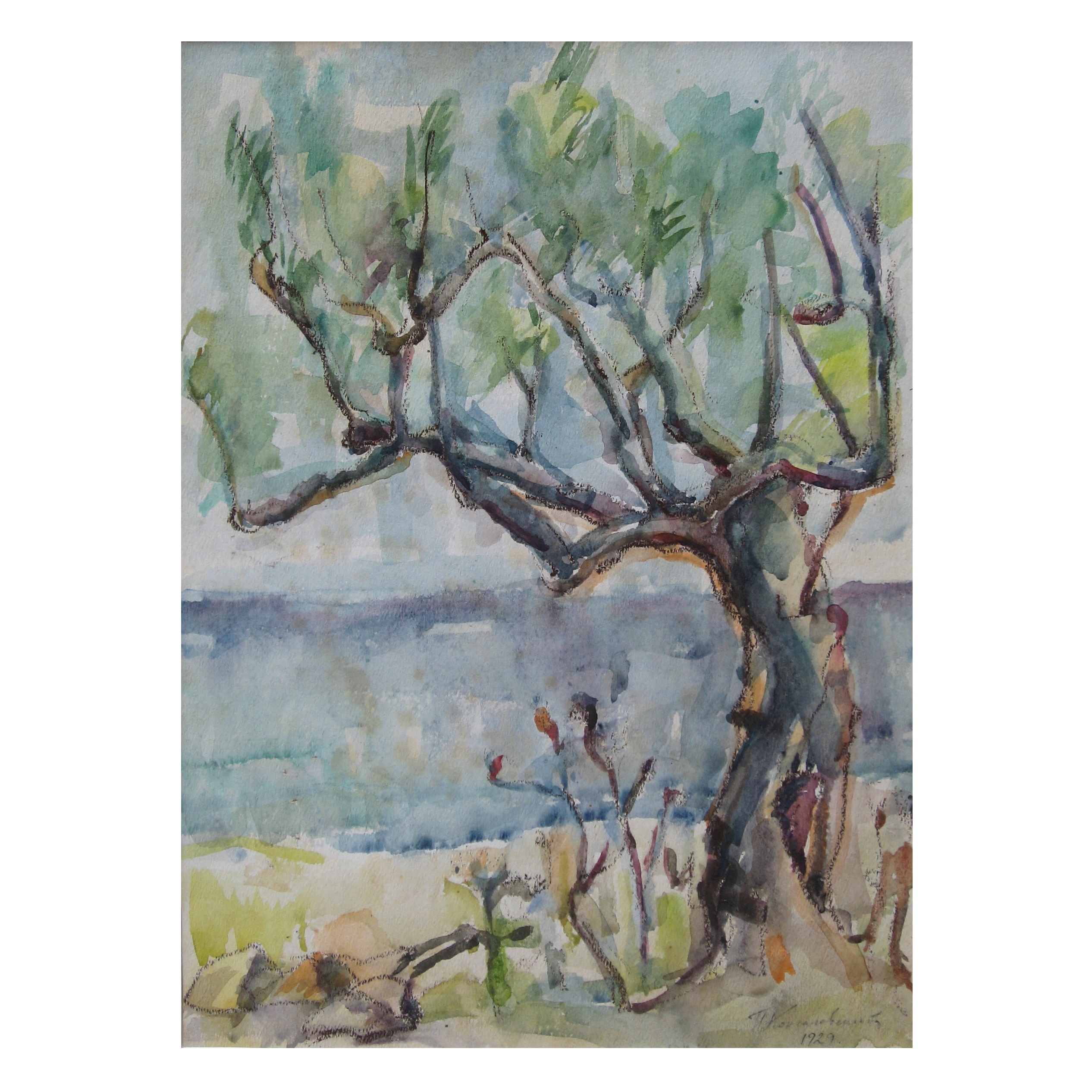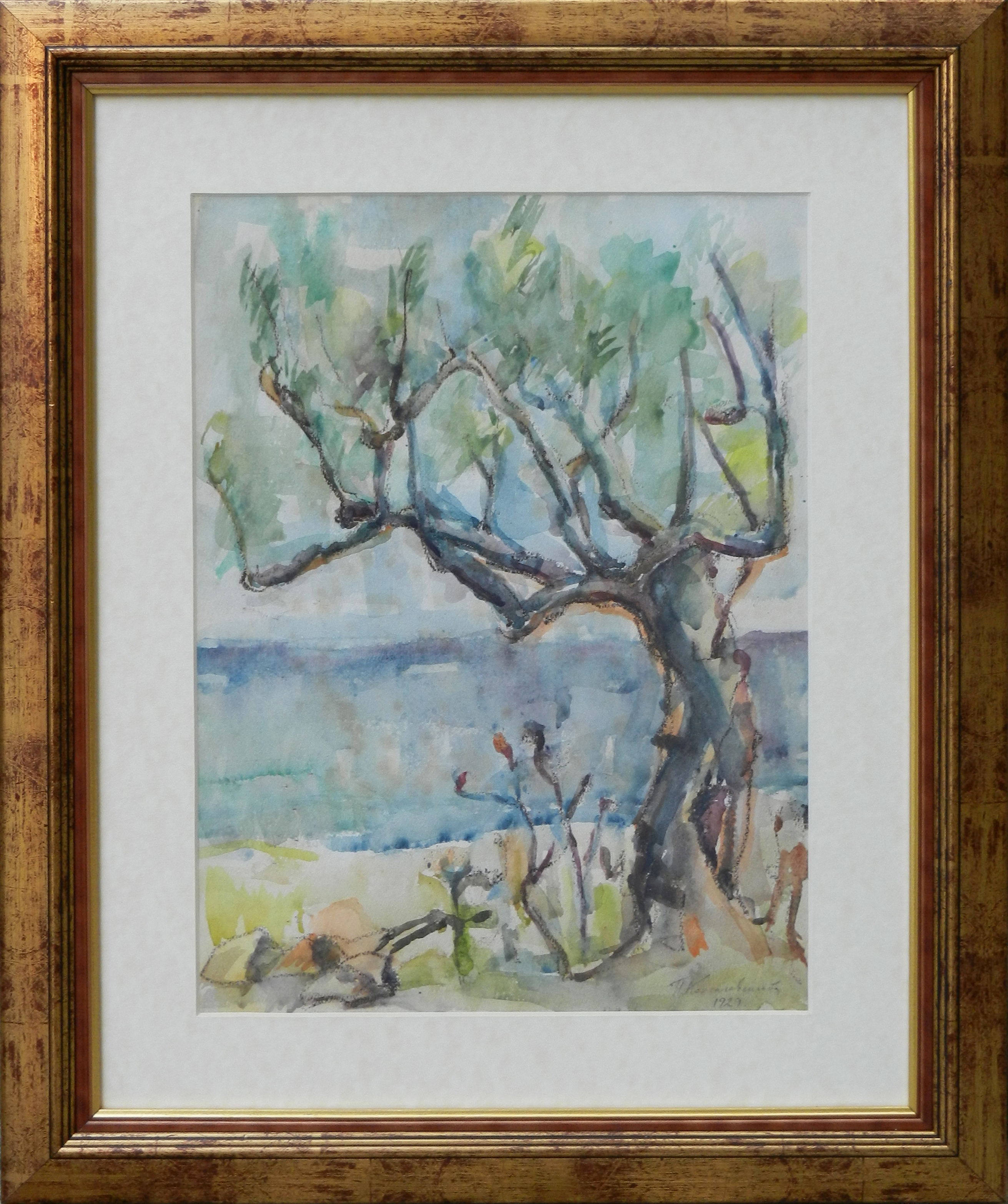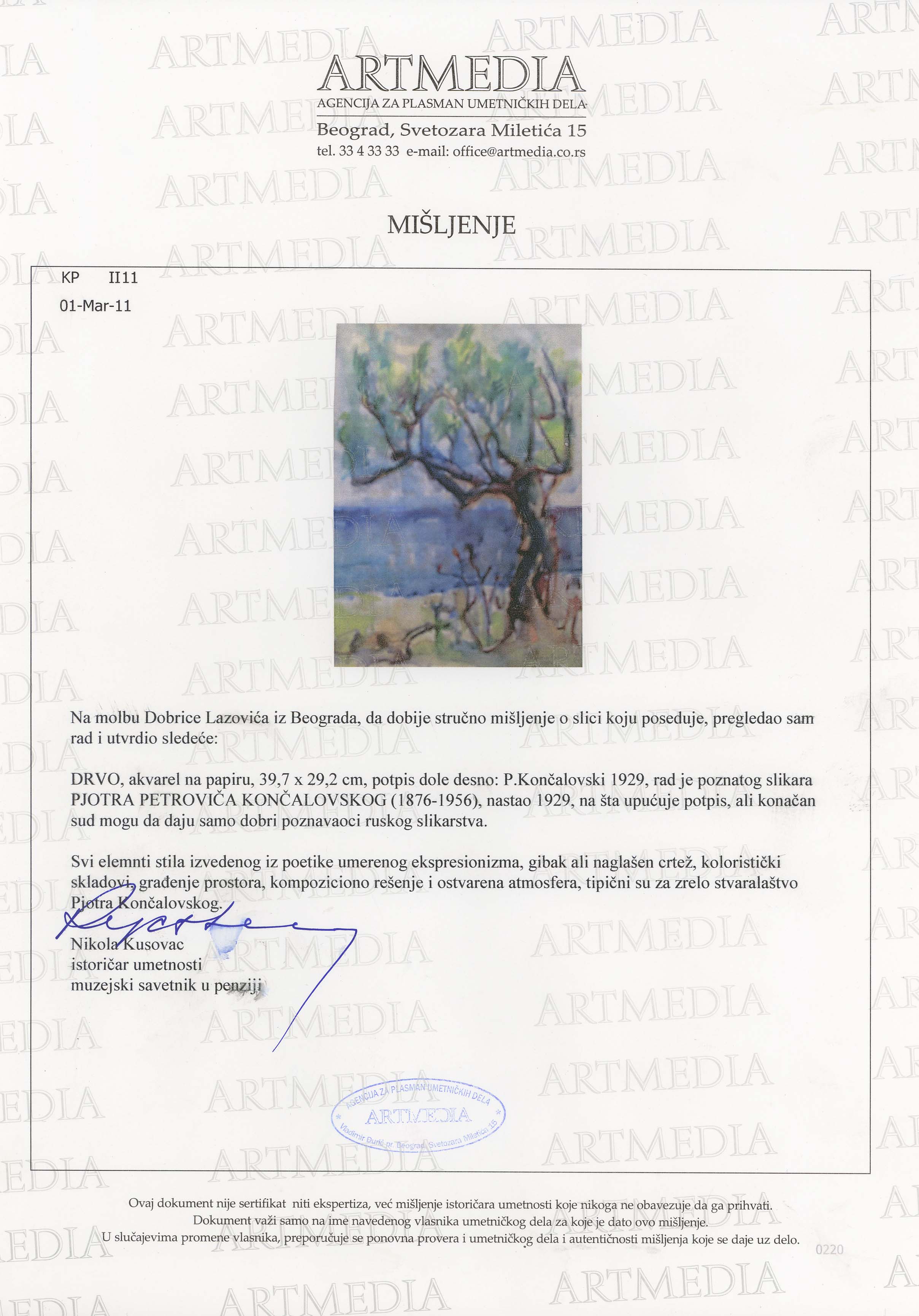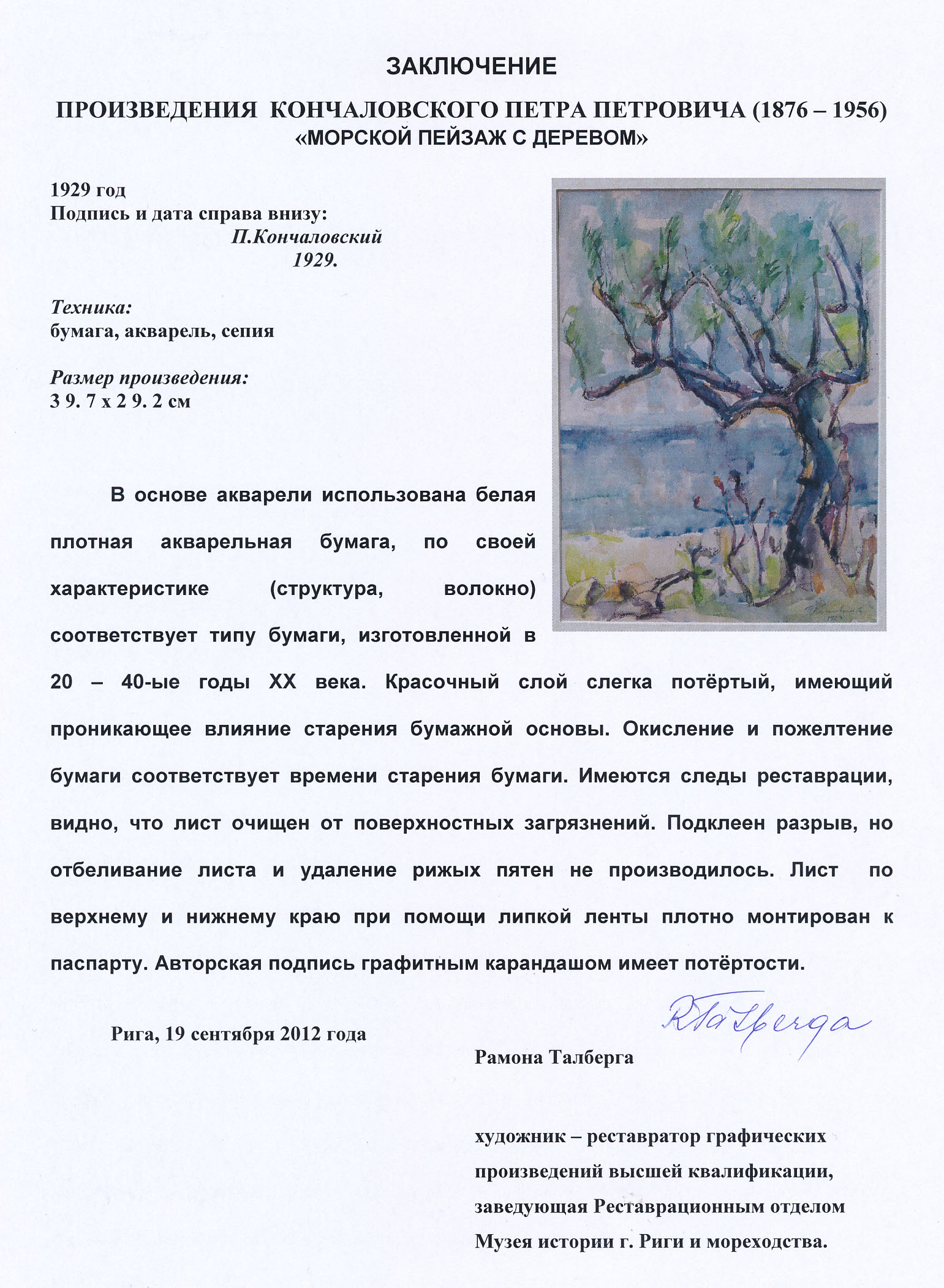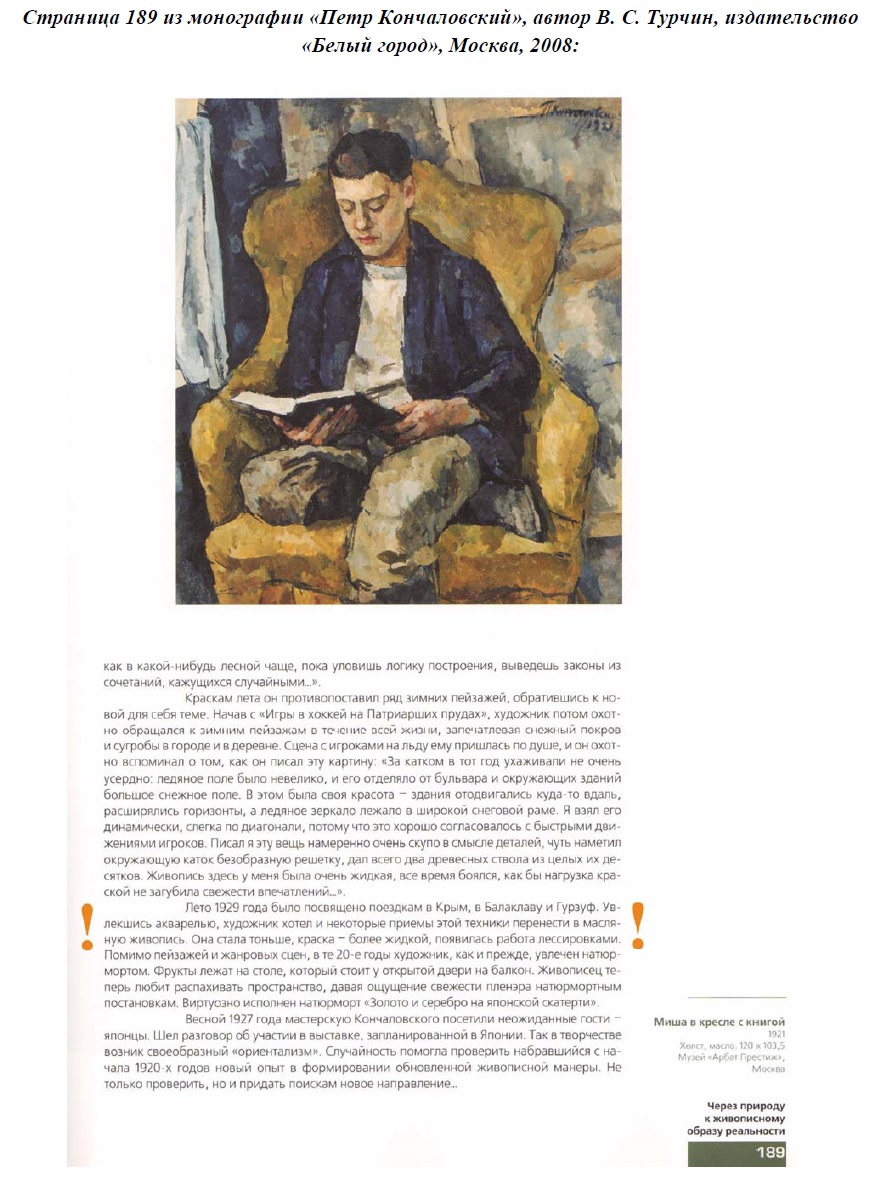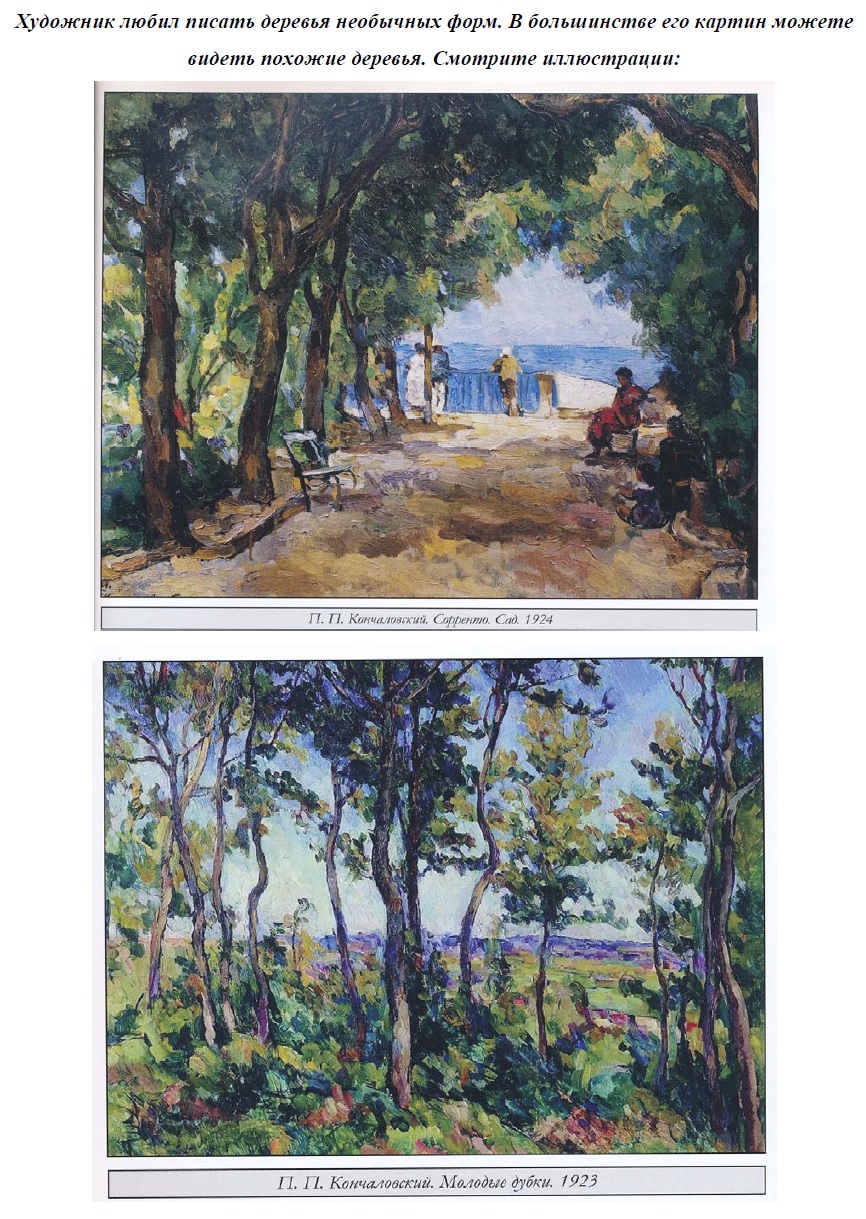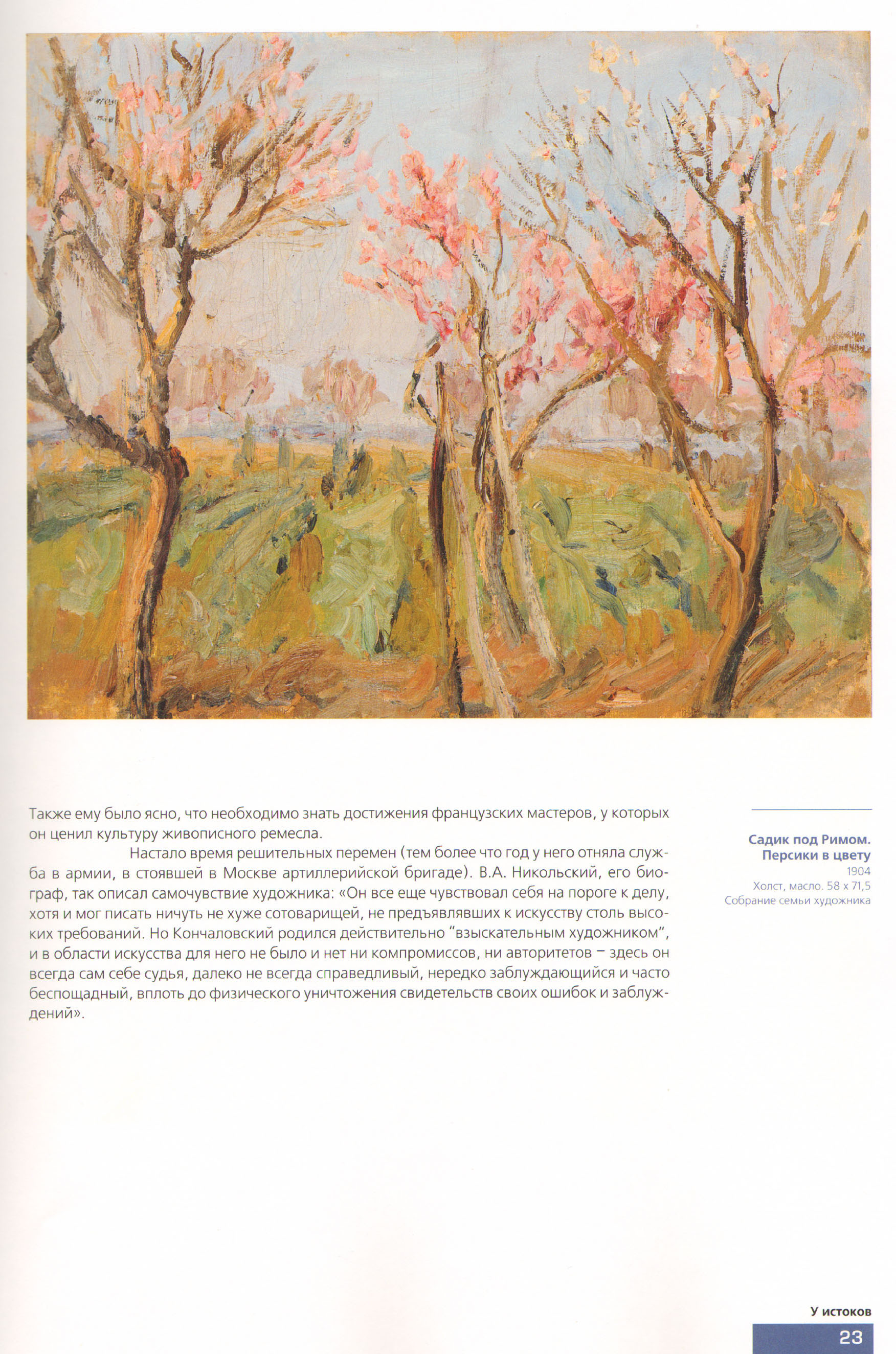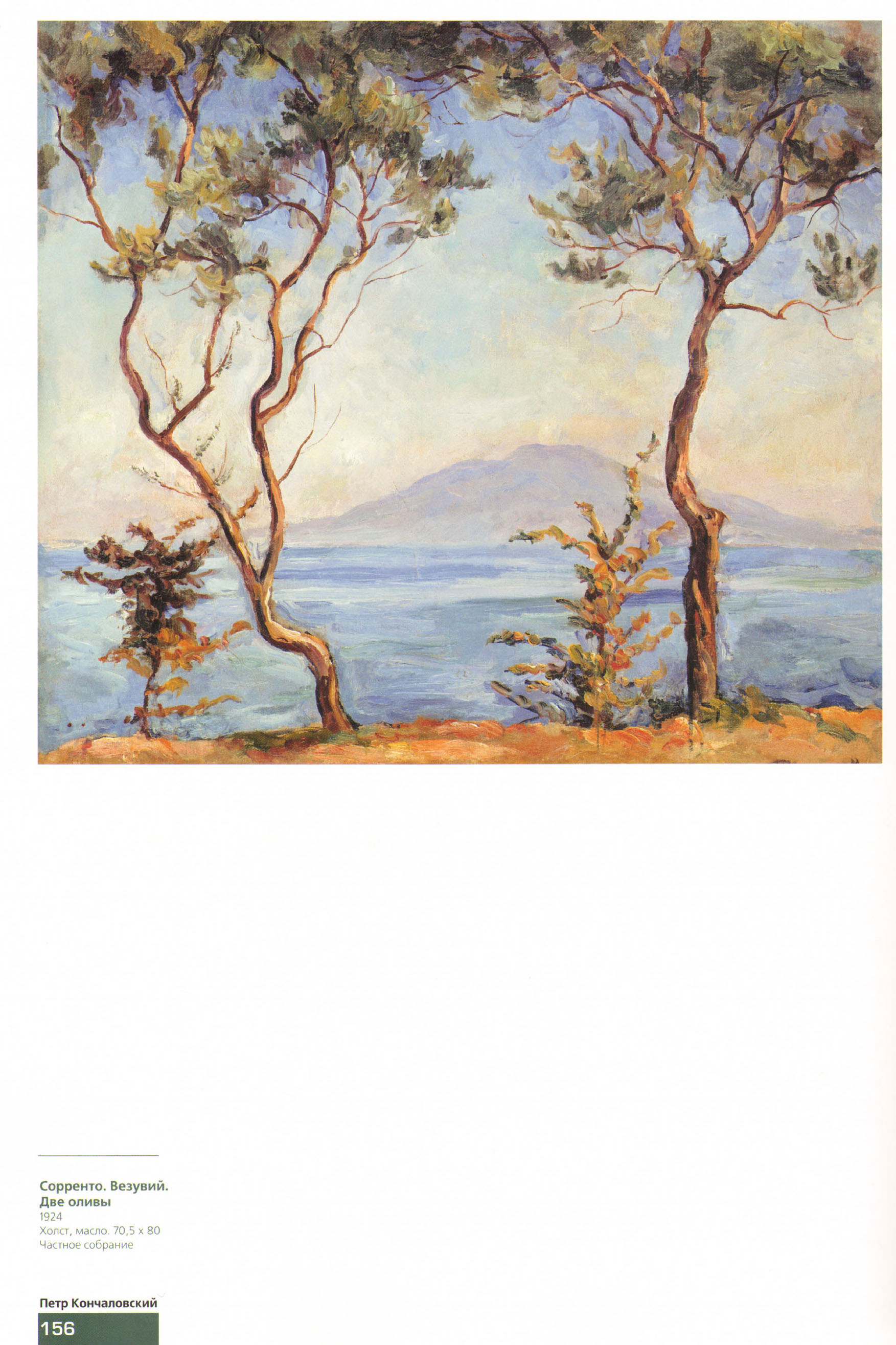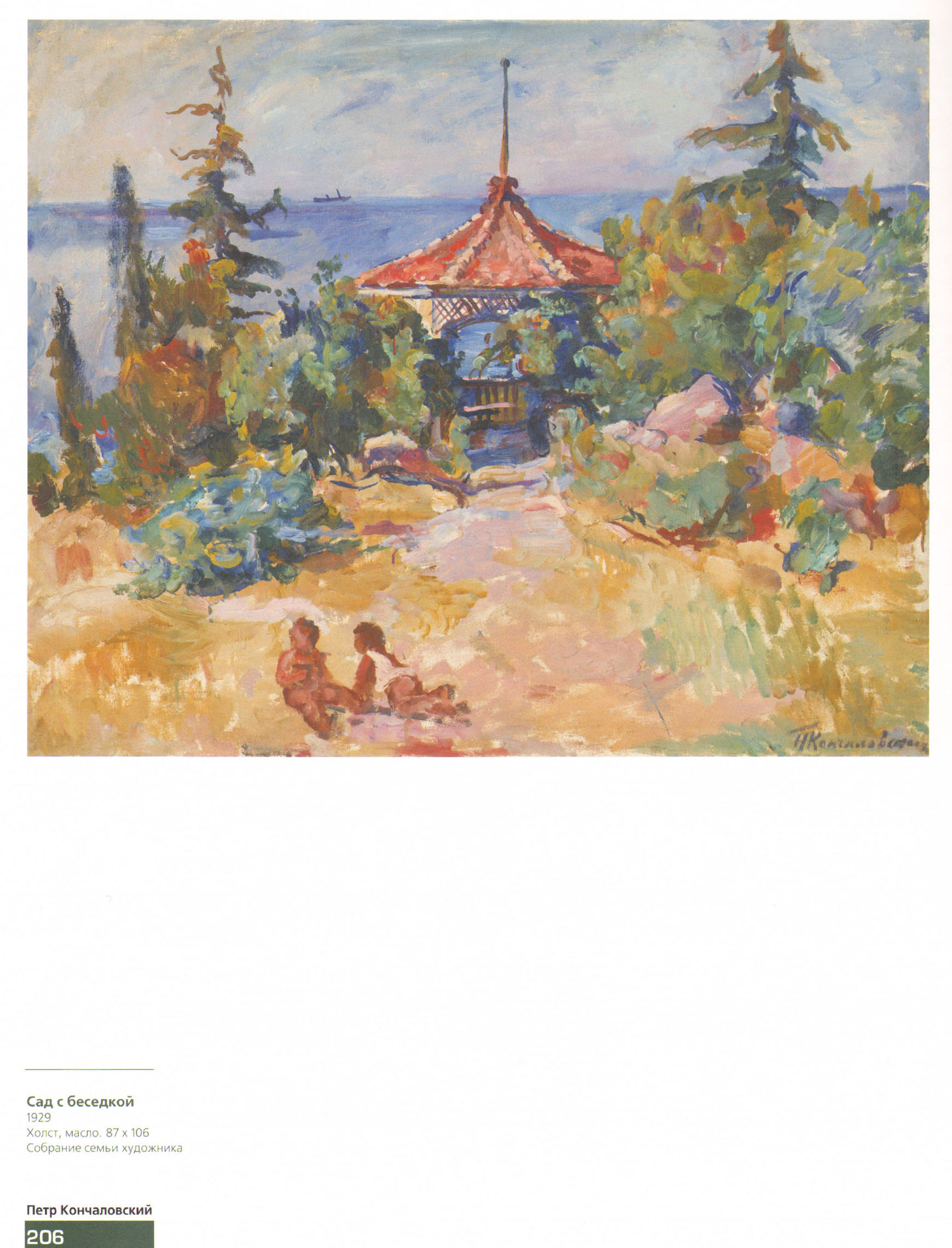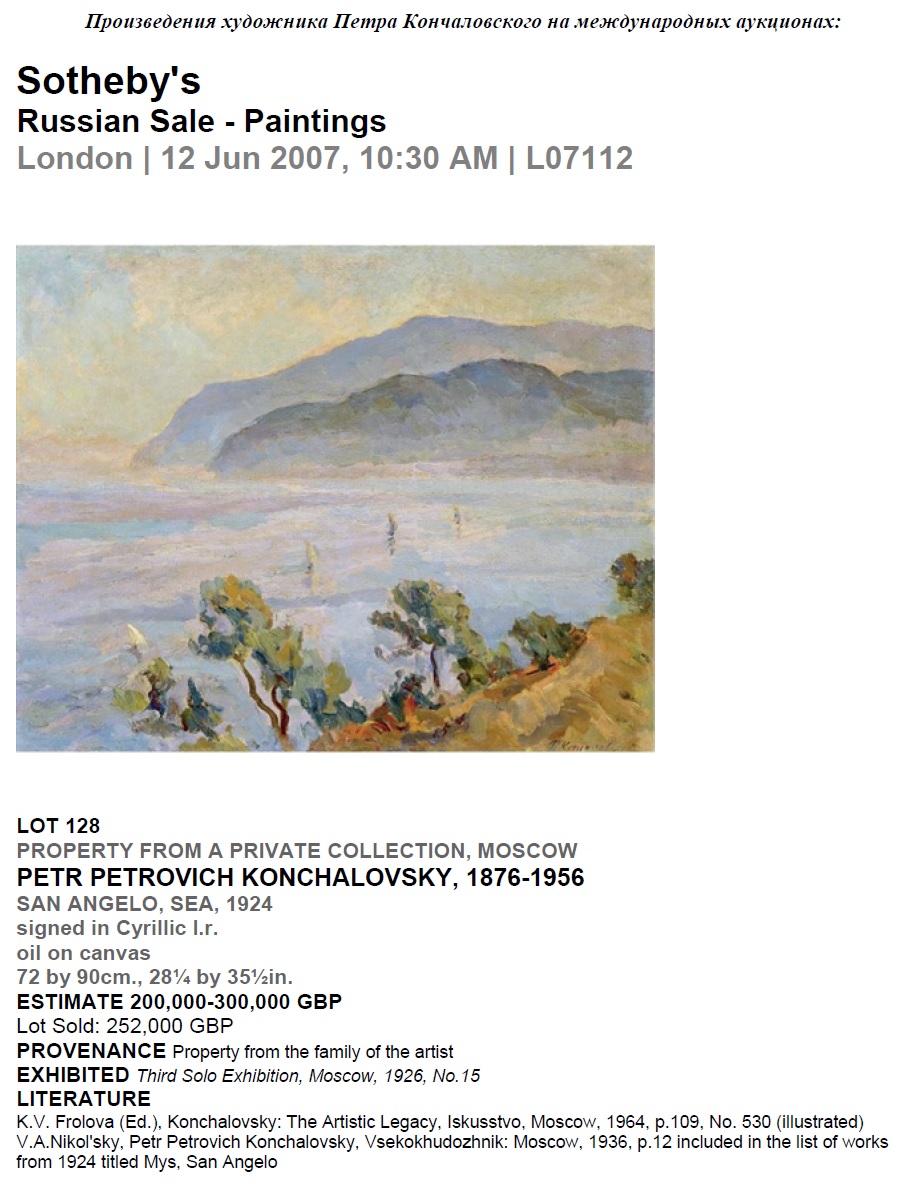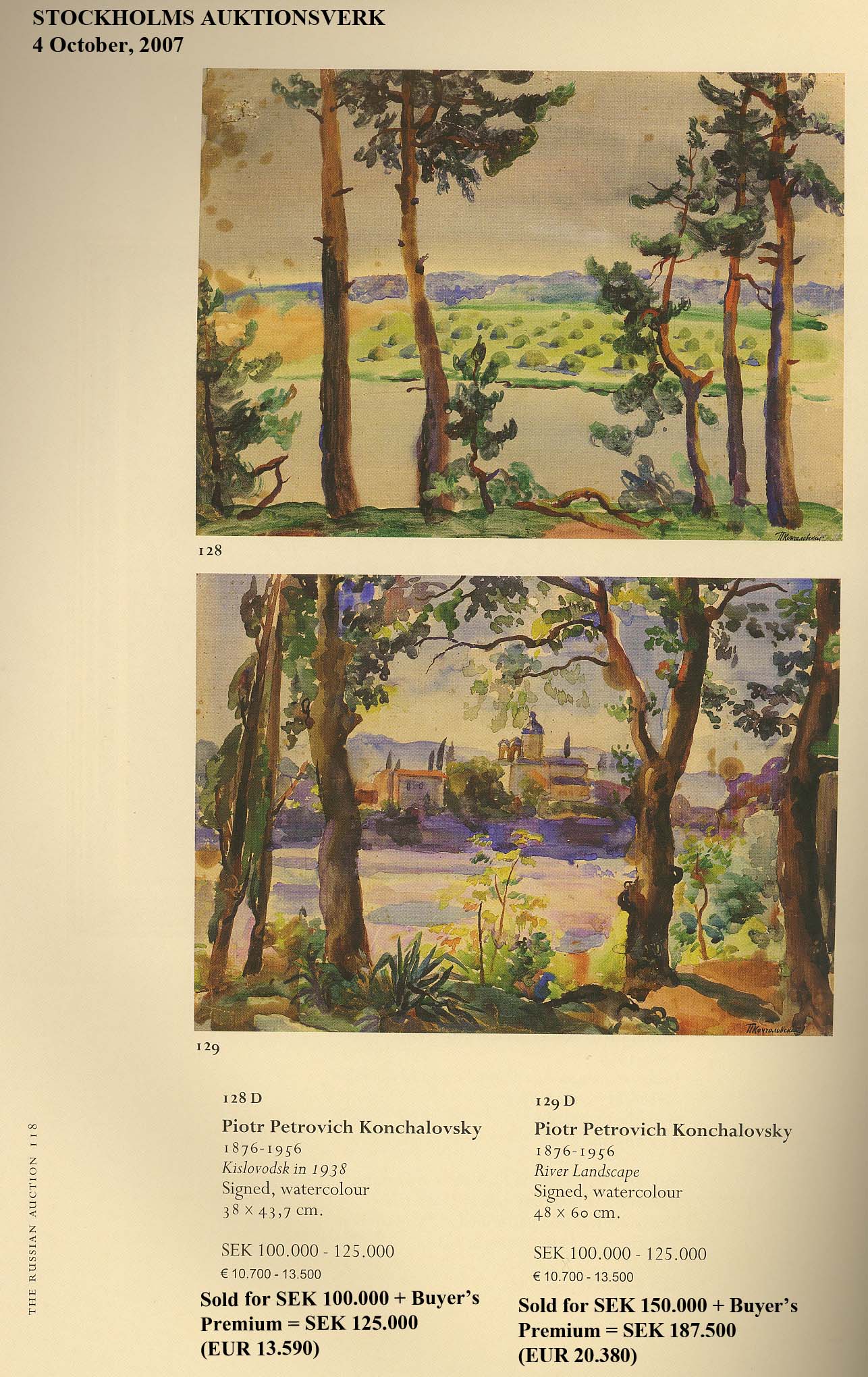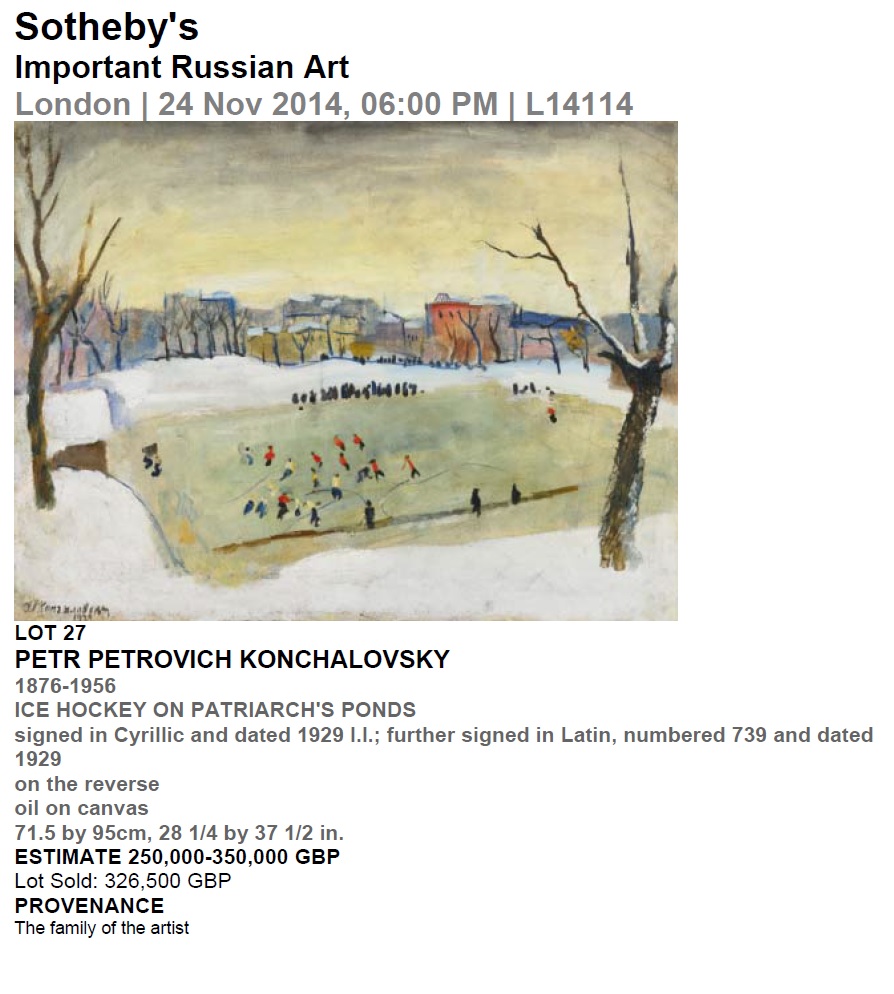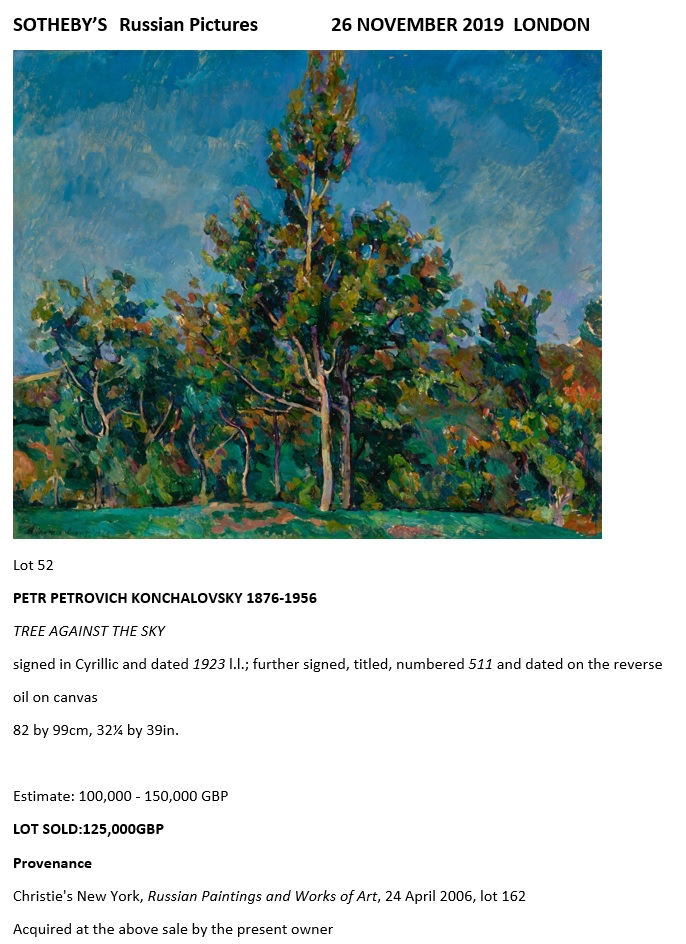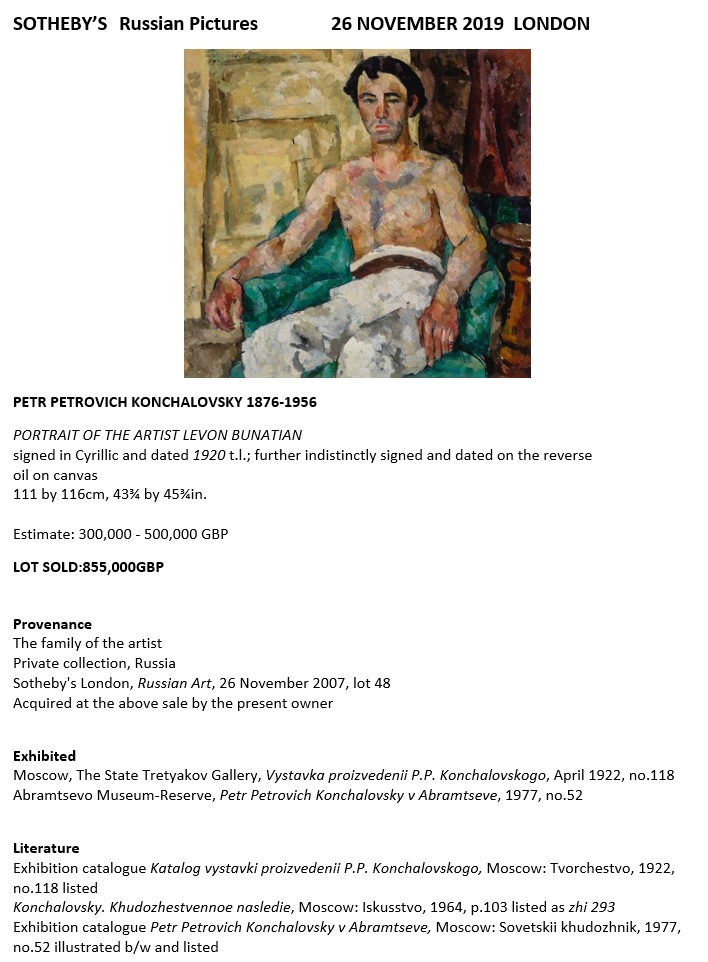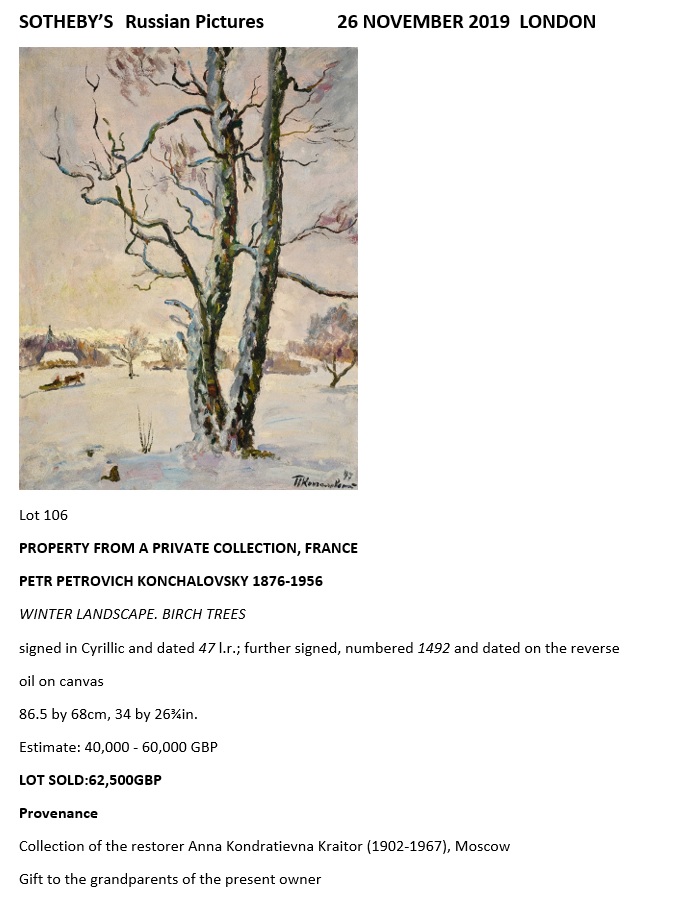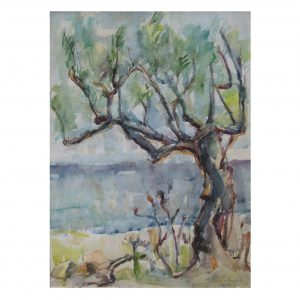Konchalovsky Petr Petrovich
1876–1956
Painter, graphic artist
Pyotr Konchalovsky was born to family of famous translator and publisher P. P. Konchalovsky. He spent his childhood in Kharkov. He studied art in the private school of M. D. Rayevskaya-Ivanova. In 1889 he moved to Moscow, where he studied under the guidance of V. D. Sukhov. In 1890s Konchalovsky met a lot of famous artists — V. I. Surikov, I. E. Repin, V. M. and A. M. Vasnetsovs, K. A. Korovin, V. A. Serov, M. A. Vrubel, I. I. Levitan and others.
In 1896 Konchalovsky entered the faculty of natural science of Moscow University. At the same time he continued his art education: he moved to Paris in 1896, attended the Academy of R. Julien, where he studied under the guidance of J.-P. Laurens and J. J. Benjamin-Constant. In 1898 Konchalovsky returned to Russia, entered the Higher Art Institute of Painting, Sculpture and Architecture under St. Petersburg Academy of Arts. He studied under V. E. Savinsky, V. I. Tvorozhnikov, and G. R. Zaleman. In 1900 he began to attend the studio of battle-scene painting of P. O. Kovalevsky.
In 1901–1902 and in 1904 Konchalovsky traveled to Italy. In 1902 he married the daughter of Surikov — Olga. In 1903 daughter Natalia was born to them, in 1905 — son Mikhail.
Konchalovsky exposed his works at the 12th exhibition of Moscow Association of Artists in the Historical Museum. In 1907 he was conferred the title of artist for the painting Fishermen dragging the fishing nets. Konchalovsky became acquainted with I. I. Mashkov. At the same year he made a trip to Germany, then — to France, where he lived till 1909.
In 1908 Konchalovsky took part in the 18th exhibition of the National society of fine arts (the Salon of the Champ de Mars), Autumn Salon in Paris. In January 1909 the artist returned to Russia, exposed his works at the 6th exhibition of the New Society of Artists and exhibition Zolotoye Runo (“Golden Fleece”) in St. Petersburg. He met A. V. Lentulov.
In 1910 Konchalovsky with his family moved to France again, exposed his works at the Salon of Independents and the Autumn Salon. He accompanied Surikov on a trip to Spain. At the end of 1910 Konchalovsky moved to Moscow, rented the studio in the house 10 on Bolshaya Sadovaya Street. He was one of organizers of the group Bubnovy Valet (“Jack of Diamonds”); the first exhibition of the group was held in December 1910 — January 1911 in the Levisson house on Bolshaya Dmitrovka. He exposed his works at the 2nd Salon of V. A. Izdebsky (1910–1911), exhibitions of the group Mir Iskusstva (“World of Art”) in Moscow (1911–1912), the Autumn Salon and the Salon of Independents in Paris (1911–1913), exhibition of new tendencies in art in the Stedelijk Museum in Amsterdam (1913). In 1912–1913 Konchalovsky participated in public debates Modern Art in the Polytechnical Museum, organized by the artists of the group Bubnovy Valet in order to explain principles of their art. In 1912 he designed the opera The Merchant Kalashnikov by A. G. Rubinstein for the S. I. Zimin’s theatre.
At the beginning of the First World War, Konchalovsky was called up for military service as officer-artilleryman. In 1915 he was contused, and evacuated for treatment to the home front (demobilized in 1918). In 1915 he took part in the Exhibition of artworks of left tendencies in the Art Bureau of N. E. Dobychina in Petrograd. In 1916 the artist left the group Bubnovy Valet, and became a member of the group Mir Iskusstva and permanent exhibitor of the exhibitions of the group (till 1922).
After revolution, Konchalovsky was elected (together with Lentulov and P. V. Kuznetsov) head of painting studio at the Second State Free Art Studios (1918–1921). His students were A. A. Labas, P. V. Williams and others. Konchalovsky also taught at the Higher State Artistic and Technical Workshops (VKhUTEMAS, 1926–1927) and the Higher Art Technical Institute (VKhUTEIN, 1927–1929).
Konchalovsky exposed his works at the 5th State art exhibition in the Museum of Fine Arts in Moscow (1919), the First Russian Art exhibition in the Van Diemen gallery in Berlin (1922), the Exhibition of Russian Art in the Grand Central Palace in New York (1924), Venice Biennale (1924) and many others. In 1922 the first personal exhibition of Konchalovsky was held in the State Tretyakov Gallery. The first monograph about the artist Life of Konchalovsky written by P. P. Muratov was published in 1923.
In 1924–1925 Konchalovsky with his family made a trip to Italy and France, where the second personal exhibition of the master was organized. He took part in the International Exhibition of Modern Industrial and Decorative Arts in Paris.
In 1926 Konchalovsky was conferred the title of the Honoured Art Worker of RSFSR (Russian Soviet Federative Socialist Republic). He became a member and participant of the exhibitions of the society Bytie (“Being”) and the Association of the artists of Revolutionary Russia (AKhRR). Since 1928 Konchalovsky was a founder member of the Society of Moscow artists (OMKh). In 1929 the personal exhibition of Konchalovsky was held in the State Russian Museum. In 1933 he took part in the exhibition Artists of the RSFSR for 15 years in Moscow. In 1930s he made several trips for creative work to Kutaisi, Murmansk, to the Extreme North, to the Caucasus.
During the Great Patriotic War the artist lived in Moscow. In 1942 he was awarded the Stalin prize for long-term creative activity. In 1946 he was conferred the title of the People’s Artist of USSR. In 1947 he was elected member of the Academy of Arts. After the War, several personal exhibitions of Konchalovsky were held in the State Maly Theatre in Moscow (1944), in the Central House of Art Workers (TsDRI, 1945), in the USSR Academy of Arts (1951).
Memorial exhibitions of the artist were organized in 1956 in Moscow and in Leningrad.
Pyotr Konchalovsky was one of the most significant masters of the first half of the 20th century in Russian (Soviet) art, which left large art heritage. His art biography could be divided into two periods. The first period (1910s) was associated with the group Bubnovy Valet (“Jack of Diamonds”), when the artist was one of the most consistent representatives of so called Moscow Sezannism (together with Mashkov). Konchalovsky’s manner of painting of that period was close to analytic cubism and fauvism. The second period (1920s–1950s) was characterized by realism style, which fit in with socialist realism. Due to this, art of Konchalovsky had great impact both on the next generations of socialist realism artists, and on the representatives of the second avant-garde wave of 1960s–1970s.
Works by Pyotr Konchalovsky are in many museum collections in Russia, including the State Tretyakov Gallery, the Pushkin State Museum of Fine Arts, the State Russian Museum and others.
